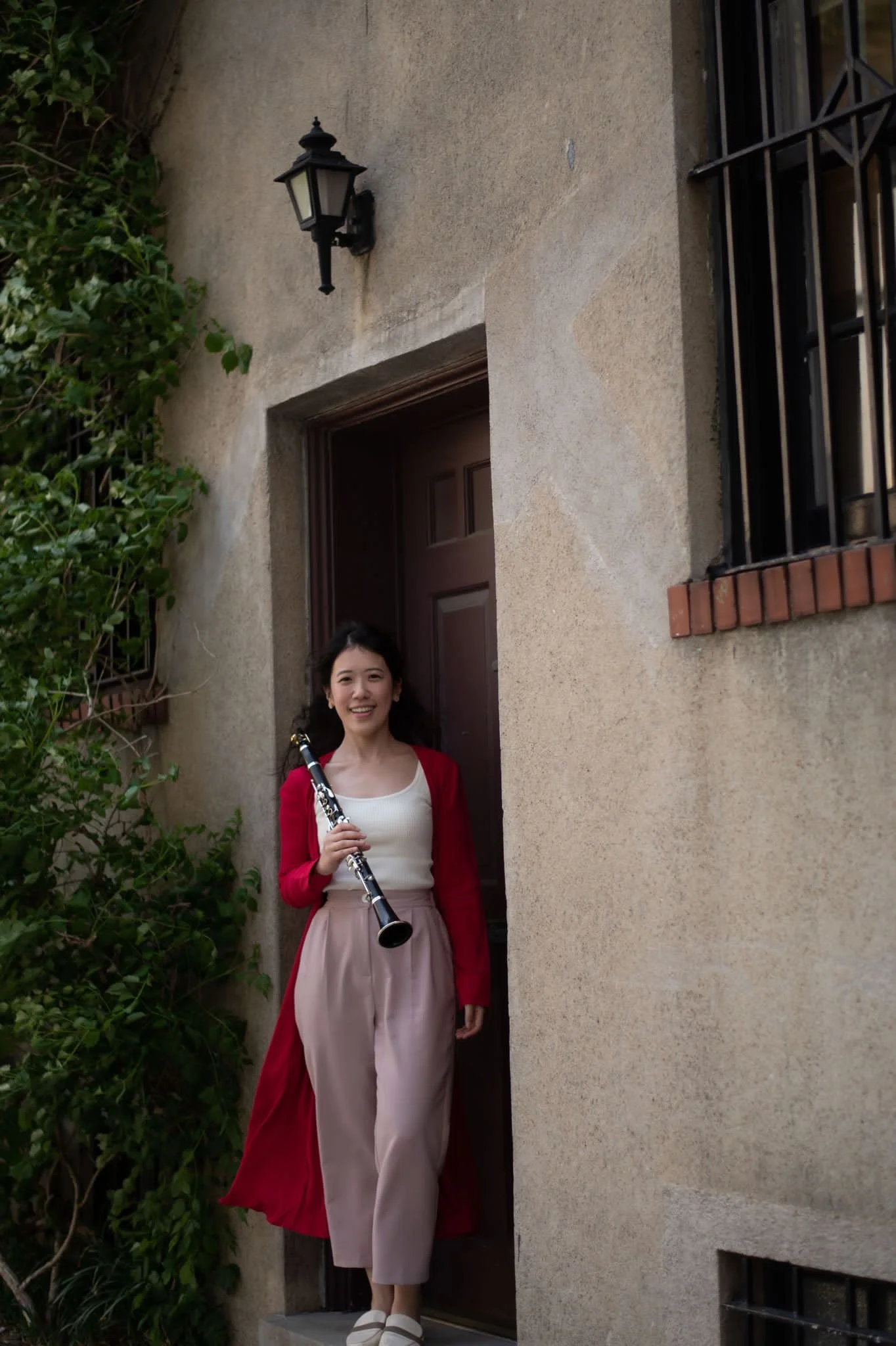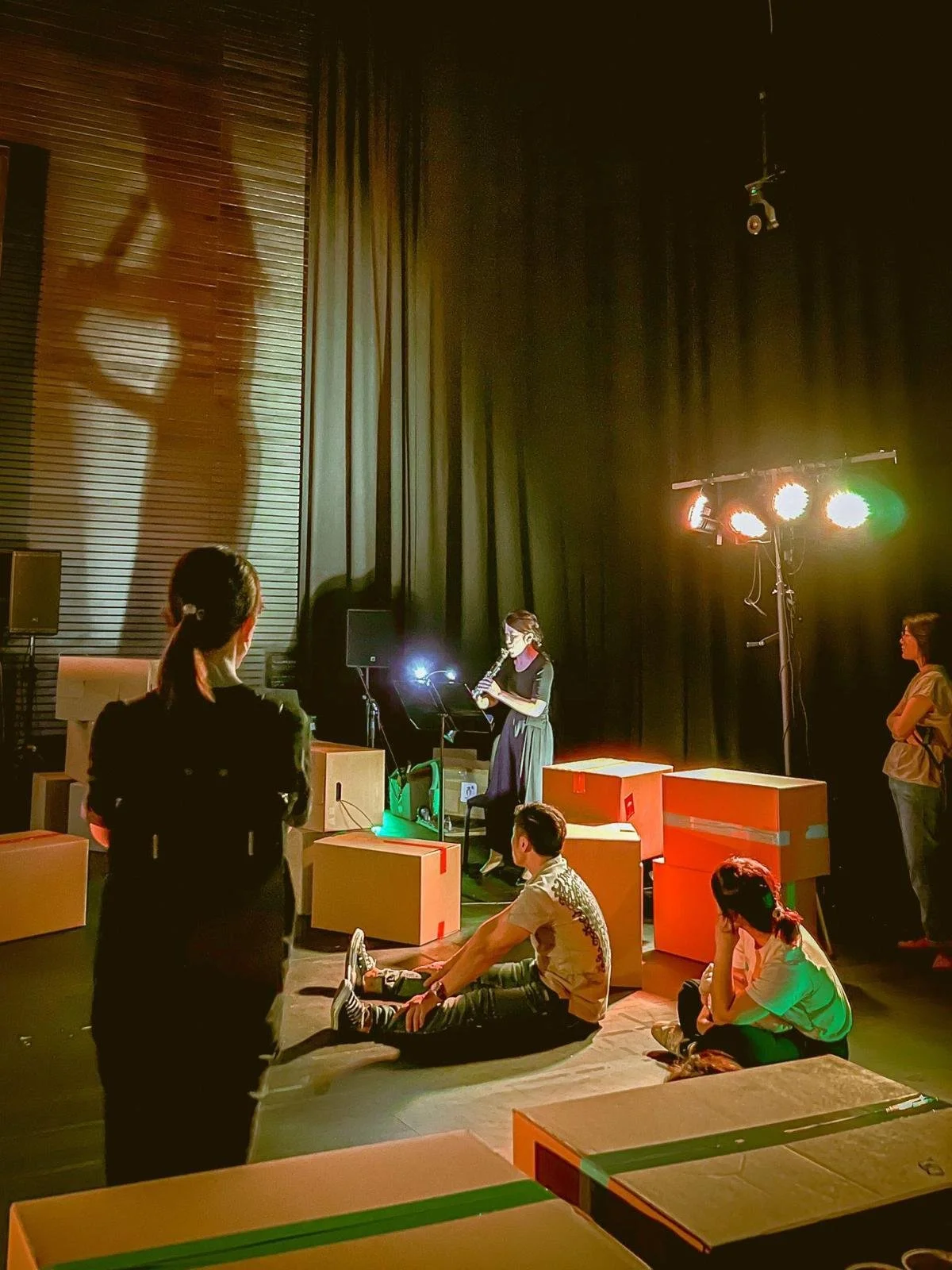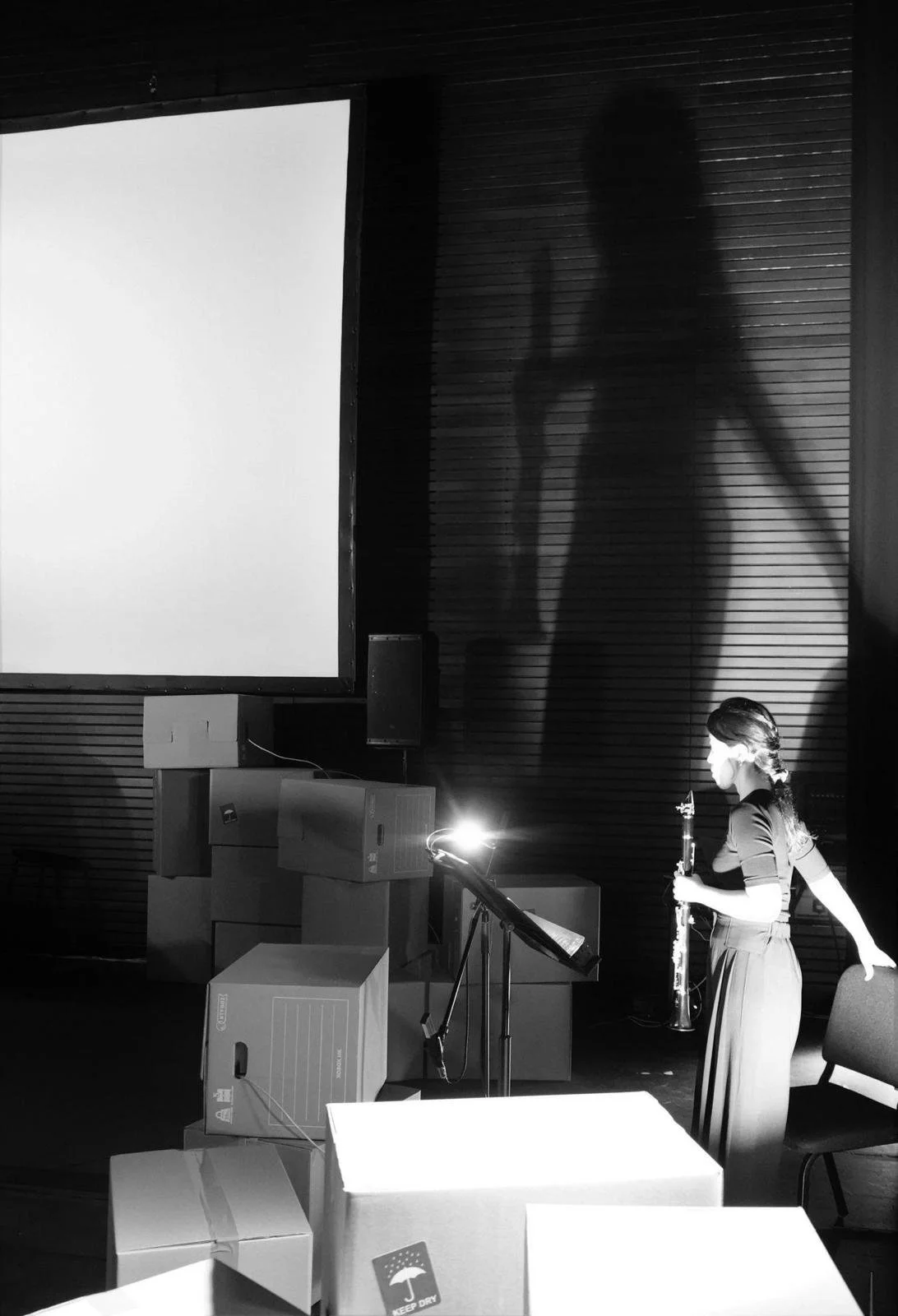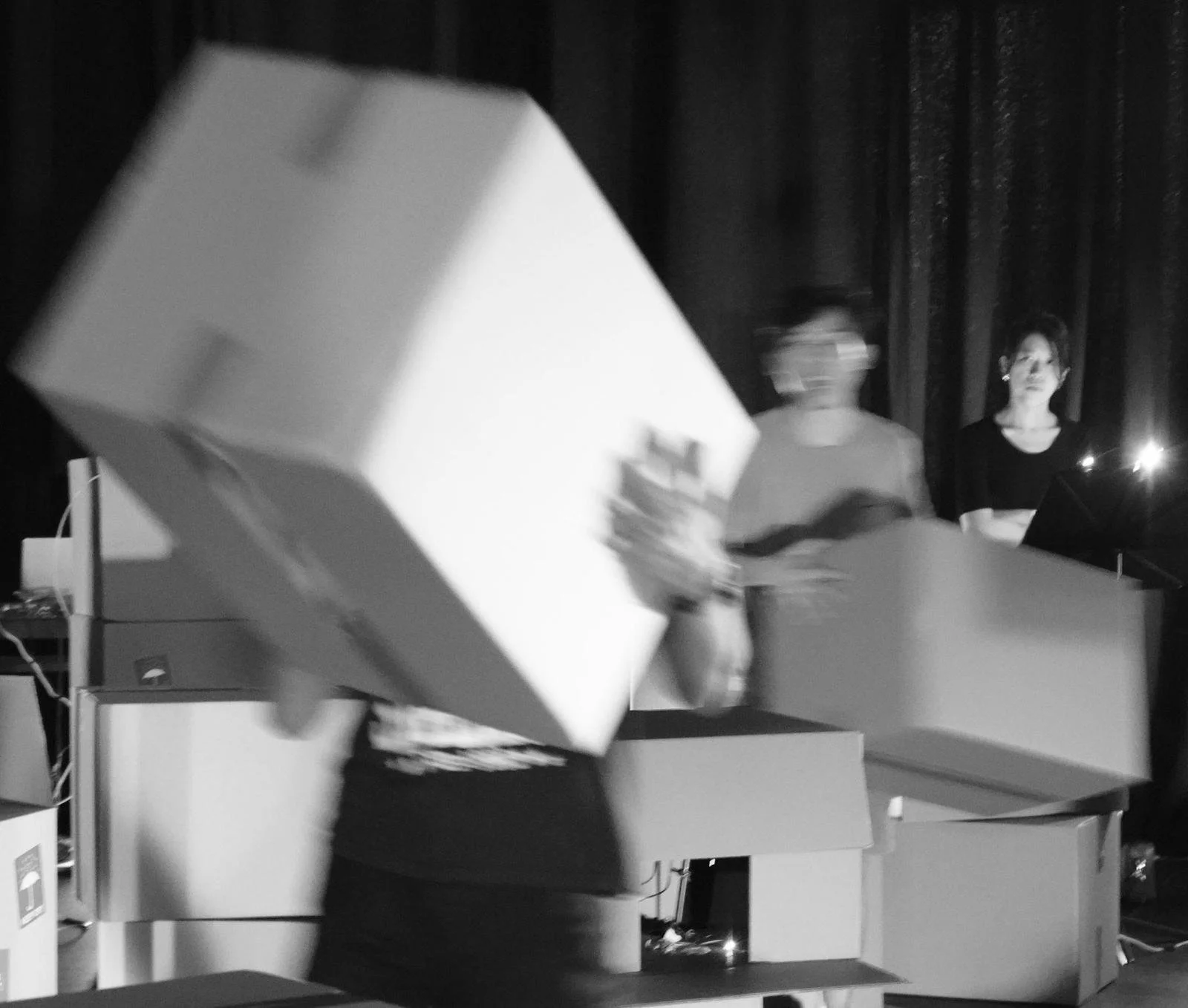AURUM x STEPHENIE NG
Interview with Stephenie Ng
August 24 2023 - By Lisja Tërshana
Renowned for her exceptional talent and devotion towards advancing Hong Kong’s vibrant music scene, Stephenie Ng is a versatile clarinetist who performs a wide range of chamber music, including rarely-performed repertoire and contemporary music. Stephenie’s unwavering commitment to staying true to her authentic self has led her to an inspiring journey of exploring the essence of genuine artistry. In this exclusive interview, we delved into her early beginnings, her philosophy of performing live classical music, the profound connection between the artist and their instrument, and her invaluable insight into the dedication required to breathe life into obscure compositions.
How did you become interested in playing the clarinet, and what inspired you to pursue it professionally?
I was introduced to different orchestral instruments in my high school band. After hearing the demonstration, I was attracted to the clarinet tone and began learning in the group class. I love the versatility of the clarinet tone; it’s humble, embracing and approachable with warmth; but it can also be fun, witty and dynamic; just like a good friend with whom you share silly and important moments. In fact, I didn’t pursue music professionally at first, instead I majored in business at university. During my freshman year, I came to realise that all the joy, motivation and expression that music had brought me were gone. Then it became so clear to me that music is what I want to pursue in life. So I dropped my study and rerouted to pursue music performance professionally.
Can you tell us about any challenges or obstacles you faced along the way and how you overcame them?
Stage fright was one of the concerns and fears at one point; symptoms like shaking hands, racing heartbeat, short breath, you name it — they all affected my performance. Overcoming stage fright didn’t happen overnight. It was a lengthy process to comprehend and confront my internal fear. Sufficient preparation is essential; meditation and breathing routines also helped a lot. There was an inspiring book called ‘The Inner Game of Tennis’ [by Timothy Gallwey] that discussed mindsets to deliver peak performance. Throughout this period, instead of trying hard to fight against the challenges, I learnt to accept, embrace and get along with them. It’s OK when your body reacts, you don’t have to blame yourself!
We know that you have extensive experience in different roles within the art field, both on stage and behind the scenes — what aspect of your career do you enjoy the most?
It was a norm that the career goal of a student majoring in music performance was to play in a professional orchestra. But I always knew I wanted something different, and I have taken the time to discover and find out my own career composition. Apart from freelancing with various orchestras and ensembles, I also work behind the scenes in arts management. Additionally, I teach clarinet and provide guidance on academic writing in music. Education is the most fulfilling and important part of my career. I am grateful to have met many great teachers who have not only taught me music knowledge but also instilled in me qualities that have had a life-long impact— persistence, problem-solving, creativity and expression. Now it is my turn to humbly share my authentic beliefs, passion and experiences with younger students to enhance their musical growth and appreciation.
How do you define “authenticity” in your approach to playing the clarinet, and how do you strive to express your unique voice through your music?
I believe that your artworks reflect what is on your mind. Everyone is naturally unique, both physically and mentally. Whether this is fortunate or not, it is something that we can hardly change. When you play a piece of music, you perform both consciously and subconsciously — your confidence, insecurities, emphasis and interpretations are all projected. Your audience can hear when you are confident, and when you zoom out a bit, there is no way to hide it. What’s difficult is translating your thoughts into music by shaping the notes with air. It takes a tremendous amount of effort, practice, and exploration.
In what ways do you believe the clarinet community or the classical music industry as a whole could benefit from reformation? Are there any specific changes or improvements you would like to see?
There is a unique phenomenon in Hong Kong where many kids are pushed by their parents to learn musical instruments in order to obtain certificates and enhance their portfolios. They are pushed to learn in a stressful, exam-oriented manner, and their connection with music is short-lived; once they attain the desired results, they stop playing. I think it’s sad that they are unable to pursue a lifelong relationship with classical music.
Have there been any recent changes in Hong Kong that could help improve this relationship with music?
In recent years, we have seen more concerts being held in non-traditional concert venues, including parks, temples and heritage sites. These concerts combine music with the scenery, cultural or architectural aspects of Hong Kong places. It offers new dynamics and acoustics for performers and audiences to share and co-create the musical experience.
How do you promote unity and collaboration within the music community, whether it's through ensemble playing, teaching, or other collaborations?
I particularly enjoy the collaboration between composers and performers, it is really intriguing. For living composers who write clarinet parts, I would often meet them in person to understand their composition processes and the specific atmosphere and effects they are seeking. This includes the frequency and variety of vibrato, multiphonics, and more. Notation is limited, and it is a privilege to surpass the score and find out the unwritten intentions. This way, I can connect with the music on a deeper level and bring out the hidden essence in my performance.
What other cross-art disciplinary collaborations have you done in the past that you would like to share with our readers, and how is it different from collaborating with a composer or other classical musicians?
Recently, I participated in a project co-created by a composer and a visual artist. It was a wonderful interplay between music enriched by electronic effects and an installation of over 100 paper boxes (some of these create interesting sounds when activated by light sensors.) In addition to the other two musicians, I had to improvise and interact with multiple sound layers, such as electronic echoes and alteration of my own playing, the moving boxes and the changing acoustics and visuals.
Can you share a personal experience where you had to navigate the balance between staying true to your artistic vision and adapting to the expectations of a specific musical context or audience?
When being part of an ensemble, it is not only about my individual artistic vision, but the collaborative effort of all involved parties. Instead of focusing on my own artistic ideal, it is more important to be sensitive and flexible in adapting to the changing roles within the ensemble. Is my part meant to lead, support or ornament? Attentive listening and making instant adjustments are very important.
How do you manifest your artistic ideas and emotions through your playing? Are there any specific techniques you employ to bring out the essence of a composition or to connect with your audience on a deeper level?
When I play the clarinet, I focus on its tone and sense the vibrations on my lips, my fingers and even in the air. I also allow my body to move along with the shape of the phrase. When I perform with full concentration and align my body movements with the music, the energy and expression transfer and connect with the audience. I also play better when I visualize an image in my mind — drawing lines of varying thicknesses, angles and curves is my favourite technique. Sometimes there are other images, like a bouncing ball or a melting ice cube, that I would imitate while playing.
In your opinion, what role does music play in fostering a sense of unity and belonging among diverse communities?
Recently, I have participated in interdisciplinary performances and collaborated with various art forms. There are many common elements among art forms, such as rhythm, spacing and movement. Learning each other’s languages, interpretations and methods of delivery is truly inspiring. I believe that such a process fosters a sense of unity and enhances the final product. Interestingly, music is not always about sound alone. Sometimes in live performances, audience find the breathing and movement of a musician even more captivating than the music itself. This is also why live performances are irreplaceable and unique compared to music on streaming platforms.
How do you encourage young clarinet players who are to embrace their uniqueness and find their authentic voice in music? Do you have any advice for aspiring musicians who might be hesitant to express their individuality?
I have been there. When we strive to enhance our performance and achieve excellence, we often focus on our weaknesses and overlook the importance to celebrate our unique qualities. Fighting to eliminate our insecurities and imperfections has not worked for me. Instead focus on accepting them and finding ways to live with them while striving for improvement every day. Observe and appreciate our own minds and beauty. Be open-minded to listen to and even play different music genres. Stay humble and diligent when you practice, and be proud and bold when you are on stage! We are all beautiful for our uniqueness. Be your true self, let go and let yourself blossom.
Can you share with us a memorable moment where you witnessed the power of music to transcend boundaries, challenge norms, or bring people together?
Recently, I traveled to New York, where I had studied for 6 years but hadn’t visited in a long time. While I was waiting for a delayed train, I heard this superb, soothing male voice singing on the other side of the station. It felt far away so I decided to follow it, and so did other people on my platform. We found him surrounded by crowd of strangers who had stopped by to enjoy the music and smiling at each other, cherishing this special moment of encounter. It may be something that happens every day, but sometimes a memorable moment is just that simple. Finally something good got out of that subway! [laughs]
Stephenie NG (clarinetist) during rehearsal & performance of 'Paper Boxing' by Rita Yung (composer) & Wong Chun Hoi (Hoi9) (visual artist), The Room, Freespace, West Kowloon Cultural District, Hong Kong, 4 August 2023. Photograph:Shelley Ng & Hong Kong New Music Ensemble (top right)John Batten & Hong Kong New Music Ensemble (bottom right & left)Editor - Lisja Tërshana
Lisja Tërshana (@tershana) is Art Editor of Aurum Arts. She is also an art curator, writer, and design strategist. As an MA Innovation Management candidate at Central Saint Martins, she is researching innovative philosophies and mediums to meaningfully transform the art ecosystem.
aurum
Our mission is to cultivate a community where Authenticity, Uniqueness, Reform, and Unity flourish, manifested through the Aurum Journal. We aim to unify life's energy with artful living, nurturing wellness and creativity in collaborative resonance.




